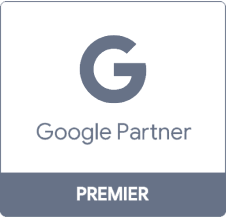How to Create a Targeted Email Marketing Campaign in 9 Steps
How do you create a targeted email marketing campaign, though?
Keep reading to learn how to build a targeted email marketing campaign in nine simple steps. If you’re looking for help when it comes to email marketing, partner with WebFX, a full-service digital marketing agency that’s driven more than $6 billion in client revenue.
Contact us online or call us at 888-601-5359 to learn more!
Our digital marketing campaigns impact the metrics that improve your bottom line.
See More Results
WebFX has driven the following results for clients:
$6 billion
In client revenue
24 million
Leads for our clients
7.14 million
Client phone calls
1. Define your audience
Defining your audience is one of the most crucial steps when creating a targeted email marketing campaign. With a well-defined audience, you can create emails that resonate with readers, whether by answering their questions or providing them with personalized recommendations.
Determine your audience by collecting as much information as possible.
Depending on your email sign-up forms, you may already have several pieces of valuable information. For example, you may know a shopper’s name, past purchases, and product interests.
A few characteristics to look for when building your audience include:
- Gender
- Age
- Profession
- Income level
- Geographic region
Other areas of interest to consider are their general interests and behaviors. If subscribers have a customer account linked to their email address, you can also use that information to get a better idea of what your target audience likes and wants.
2. Divide your current vs. prospective clients
Not everyone who’s a part of your email subscription list is the same. While some are long-term and loyal clients, others are investigating your company and researching your products. These are two types of audience members, emphasizing the need to segment your readers.
Why?
A potential client has different needs than a current client. While a prospective client may want to learn why your product or service is worth their money, a current client may want more information on how to use your product or service to its fullest potential.
That’s why prospective clients may enjoy welcome emails that serve as an introduction to your business. If you’re an ecommerce store with a vast selection of products, they may also like an email that recommends products, based on that reader’s browsing history.
Current clients, on the other hand, may like to receive thank you or update emails that express your company’s gratitude or share your team’s latest accomplishment. They may also appreciate emails that highlight product case studies, features, and more.
Divide your current and prospective clients, and you can create a custom and targeted email marketing campaign that drives visible results for your company. These results can range from calls to purchases to quote requests.
3. Collect your data
Once you establish who your audience is, it’s time to collect some additional user data. With this information, which can range from demographic data to purchase histories, you can create a personalized email marketing campaign.
If a user has an account with your company, you can access this data with ease.
For example, you can reference a user account to see their most recent purchases. You can also discover their purchase frequency, which can help your company determine the potential for increasing that user’s number of purchases.
Before you gather user data, it’s critical to review your website’s terms and conditions.
As an example, if your terms and conditions state that you do not use account information for marketing purposes, then your team should not reference this data. If your company operates in Europe, you should also review the General Data Protection Regulation (GDPR) standards.
If your company doesn’t have a substantial amount of data on your audience, do some research.
Browse social media, for example, and see what users in your target audience are saying. Based on their discussions, whether on what they want in a product or what they hate in a service, you can build an email marketing campaign that targets these user priorities.
4. Integrate your email platform with another tool
Maximize the results of your targeted email marketing campaign by combining your go-to email marketing platform, like EmailMarketingFX, with your customer relationship management (CRM) software or ecommerce applications.
When you incorporate your marketing toolset, it becomes easier for your team to monitor the success of your email campaign. The integration can also streamline lead generation efforts, as well as campaign improvements.
Why does integration provide so many benefits, though?
The applications and other tools in use by your business probably contain all the necessary client information you need. For example, your CRM may have data on current customers, like their purchases, location, and more.
When you sync your platforms, they work in harmony to optimize the effectiveness of your email marketing tactics. They can also contribute to your overall sales, which can help your company grow and achieve new revenue milestones.
5. Target by location
There’s a reason 87 percent of marketers experience greater success when targeting by location.
With location targeting, you can experience a higher response rate. Even better, you streamline and simplify your efforts when it comes to reaching your target audience and providing customized content.
These benefits can help your team land more sales too.
How do you target subscribers based on where they live?
With emails, you can get creative. Use graphics relevant to each reader’s area. If you’re targeting audience members in New York, for instance, consider using images that feature well-known sights of New York, like the Statue of Liberty.
Use dialogue that specific to certain areas, too. For instance, using local phrases or key terms in your emails can make your messages appear much more personalized and welcoming to your audience, removing the disconnect between your business and your clients.
If you’re targeting your audience by location, make sure to create a custom audience segment. For example, if you’re building a targeted email marketing campaign for the East Coast and West Coast, you want two separate audiences for each of these regions.
6. Divide your audience by sex
For businesses that offer products or services targeted to a specific sex, segmenting your audience by sex can make a tremendous difference in the performance of your targeted email marketing campaign.
As an example, a clothing company that focuses on men’s and women’s fashion can benefit by creating a male and female audience group. They can then send female users clothing options from their women’s line and male users selections from their men’s line.
In comparison, if you’re a business-to-business (B2B) company, it doesn’t make sense to use this audience segmentation. You’re offering a service or product to an entity, rather than a person, for individual use.
7. Use custom fields
Consumers love personalization.
That’s why it’s critical for targeted email marketing campaigns to leverage custom fields, which can include the subscriber’s name, recent browsing history, and more. These fields, which can appear in subject lines, can encourage users to open their emails too.
Depending on the reader, your team may have access to a limited amount of data. In most cases, however, you should have a subscriber’s name. This piece of data allows your company to provide a partial, but impactful, personalization.
With personalization, you make readers feel as though you wrote the message for them. This feature can influence how subscribers view your brand. It can also push them to act on your calls-to-action (CTAs), like purchasing from your company.
8. Analyze previous purchasing behaviors
What better way to plan for your readers’ future behavior than by analyzing their past actions?
When you track your audience’s past shopping experiences, it gives you the advantage of knowing how you can best target your subscribers. It also provides your team with valuable data when it comes to delivering a personalized email.
For example, your business may re-engage subscribers that abandoned their shopping cart with a reminder email. Or, you may send an email with customized purchase recommendations, based on that reader’s browsing history.
You can even issue time-sensitive offers to motivate customers to take action immediately.
When you know where a client stands in their purchasing journey, you can take control of your targeting tools to nudge them in the right direction — whether it means visiting your site or finalizing their purchase.
9. Check your analytics
In email marketing, data is your best friend.
Use data from your email marketing campaign to refine and improve your targeted email marketing campaign. For example, maybe your emails continue to have low open rates, forcing your team to reconsider your subject lines or email content.
Review your data on a weekly basis to keep your campaign optimized. Even if your campaign performs exceptionally well, a routine evaluation by your team can help spot potential areas for improvement.
Want to launch a targeted email marketing campaign?
If you’re ready to create a targeted email marketing campaign, but don’t know where to start, WebFX can help. With more than 28 years of experience, we know email marketing.
Discover why our client retention rate is more than 90% by contacting us online or calling us at 888-601-5359!
Table of Contents
- 1. Define Your Audience
- 2. Divide Your Current vs. Prospective Clients
- 3. Collect Your Data
- 4. Integrate Your Email Platform with Another Tool
- 5. Target by Location
- 6. Divide Your Audience by Sex
- 7. Use Custom Fields
- 8. Analyze Previous Purchasing Behaviors
- 9. Check Your Analytics
- Want to Launch a Targeted Email Marketing Campaign?
Related Resources
- 8 Best Email Marketing Tips for Your 2024 Campaigns
- How to Build the Best Email Marketing Strategy in 2024
- How to Create an Opt-In Email Marketing Strategy
- How to Increase Email Open Rate: 5 Tips to Get Started
- The 6 Different Types of Email Users and How to Market to Them
- We Studied 6,713 Holiday Marketing Emails. Here’s What We Uncovered
- Write Engaging Email Subject Lines to Increase Open Rates
- 12 Holiday Email Marketing Tips
- 6 Email Marketing Objectives to Help You Get More from Your Campaigns
- 6 Email Opt-In Strategies for Growing a Quality Subscriber List
Marketing Tips for Niche Industries
- How Can Email Marketing Help Your Dental Practice?
- Insurance Email Marketing for Agents & Companies
- Real Estate Email Marketing: Your Guide to Email Marketing for Realtors
- Simple and Successful Email Marketing Tips for Construction Companies
- 3 Effective Heavy Equipment Email Marketing Strategies
- 4 Email Marketing Tips for Higher Education
- 4 Email Marketing Tips for Pest Control Companies
- 4 Simple Email Marketing Tips for Home Services Companies
- 5 Benefits of Email Marketing for Franchises
- 5 Benefits of Email Marketing for Restaurants









